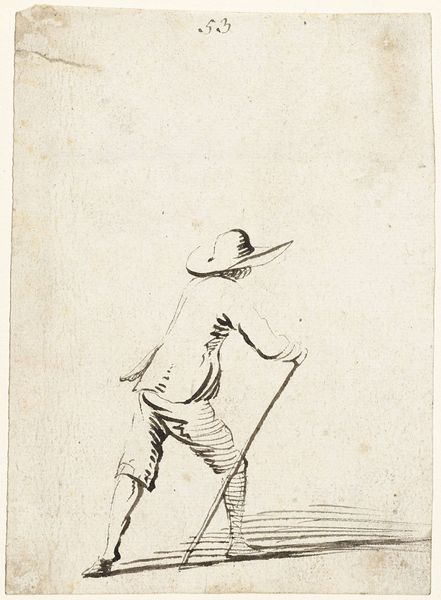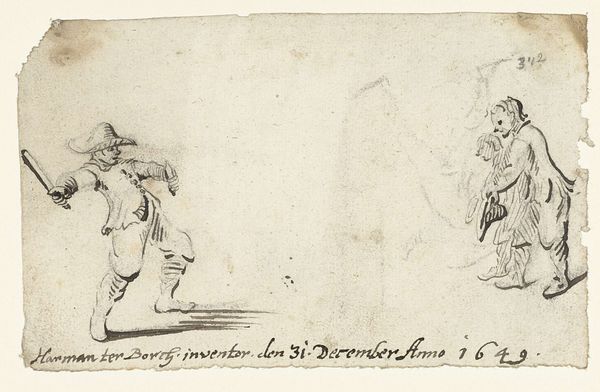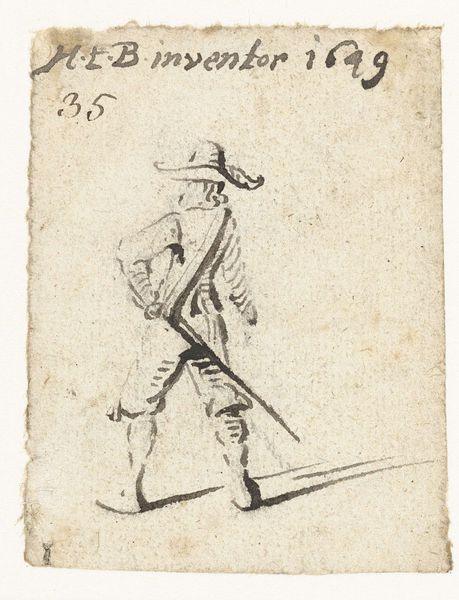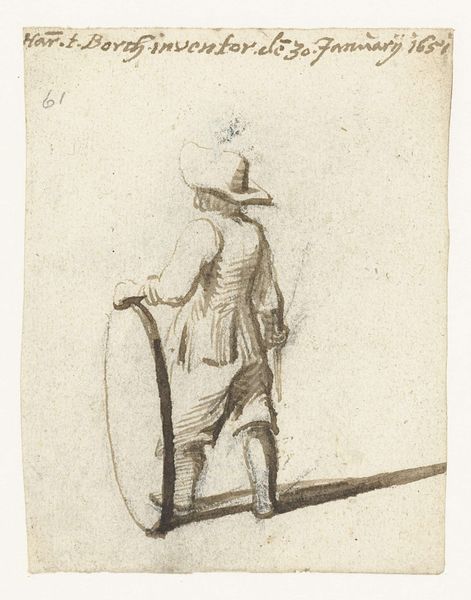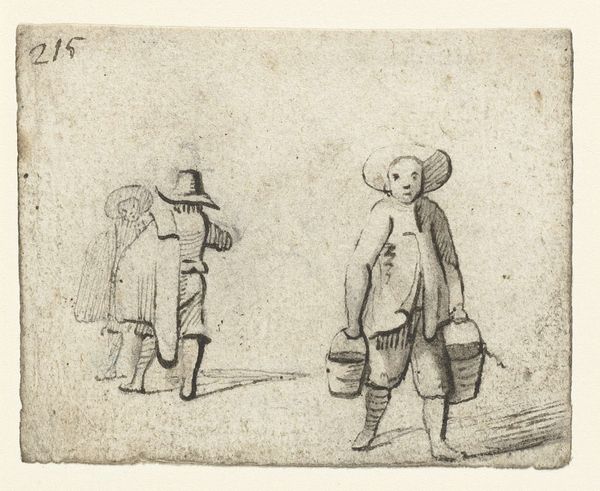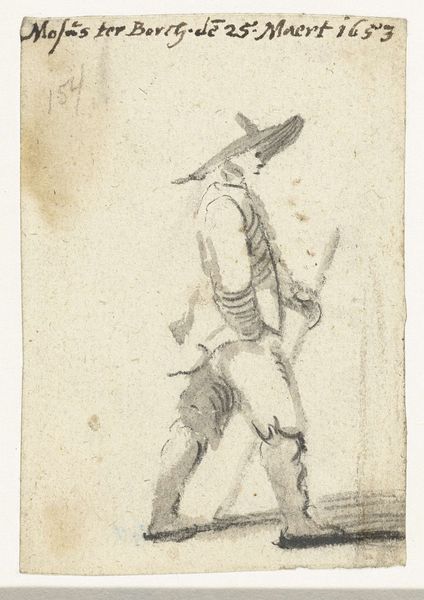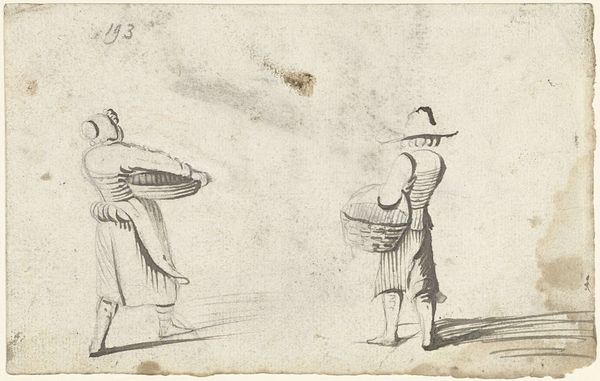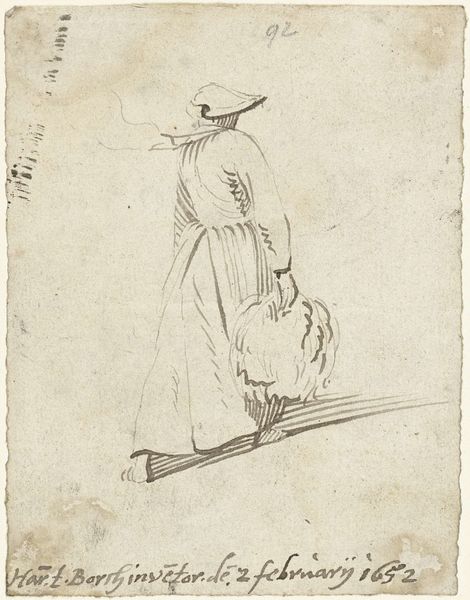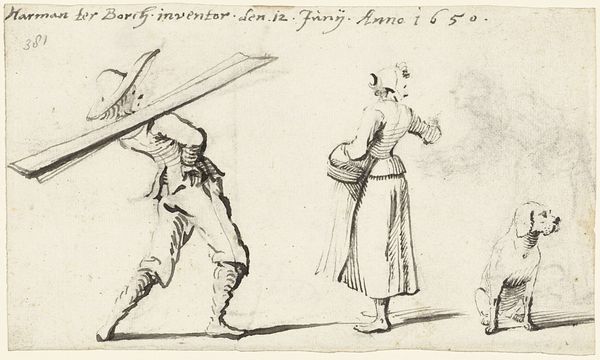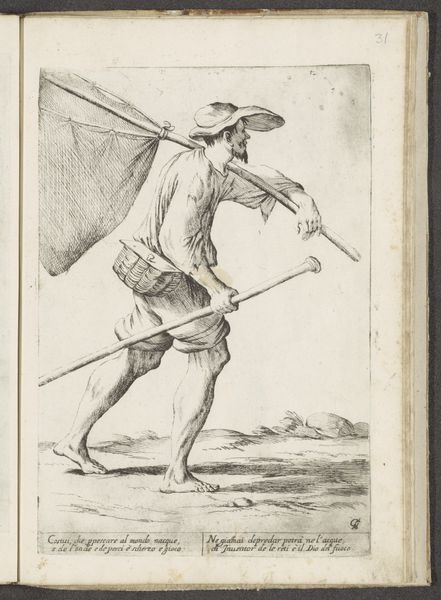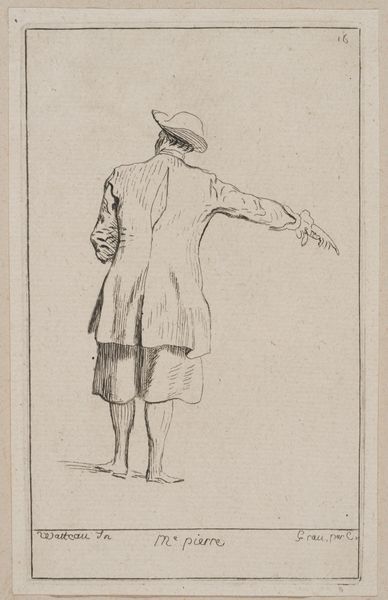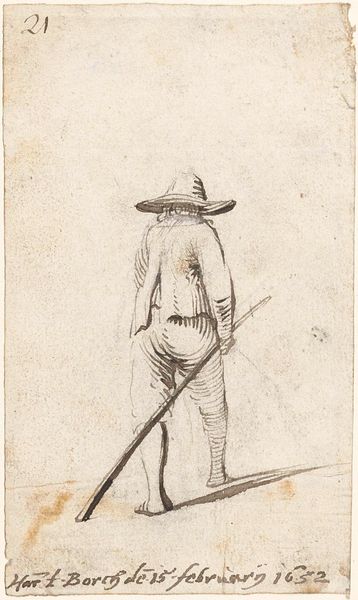
drawing, paper, ink, pen
#
portrait
#
drawing
#
dutch-golden-age
#
figuration
#
paper
#
ink
#
pen
#
genre-painting
Dimensions: height 27 mm, width 85 mm
Copyright: Rijks Museum: Open Domain
Curator: Immediately, I am struck by the image's casual intimacy – almost a snapshot despite its age. It conveys a sense of movement, albeit stylized, that feels quite fresh. Editor: You’ve zeroed in on its immediacy, indeed. What we’re viewing is Harmen ter Borch’s “Three Walking Figures, a Man from the Back,” created with pen and ink on paper, likely between 1651 and 1655. It currently resides here at the Rijksmuseum. Ter Borch, though best known for his painting, often sketched scenes from everyday life, which is what we observe here. Curator: "Everyday life" seems spot on. The walking figures have a theatrical yet spontaneous quality. Look at the first man bent double carrying what seems to be a table on his shoulders – is that a glimpse into their economy and hard living of the time? Then we move on to another person holding a sort of pole and sporting an opulent headwear and what to make of the third figure that seemingly cradles pillows, a burlesque character no doubt? Editor: That pole likely indicates status – think of it like a staff or walking stick for a well-to-do merchant or government figure. And yes, while the first figure hints at more common labor, the details in his rendering offer a peek into Dutch class structures and modes of commerce. As for that woman she represents someone with all earthly possesions tied around her apron and ready to go; no permanent home perhaps; a gipsy? a beguin? Ter Borch could have a good story to tell of the everyday characters. Curator: And, given it's a drawing in pen and ink, that linearity underscores the idea that the artist's hand created something tangible, directly and expressively documenting his world. Do you see how Ter Borch captures the nuances of how textiles drape with just a few flicks of the pen. Editor: Absolutely! But consider that a drawing also implies a degree of selection and perhaps even idealization. How "real" is real when the artist gets to choose the narrative presented, in his hand – literally! Ter Borch has chosen to give the viewer this glimpse into the lives of such characters through the filter of the drawing, this medium in which stories unfold visually as they traverse life's unpredictable path. Curator: Well, in my reading that sense of "snapshot" feel offers its viewers an engagement with daily realities from centuries past – what’s captured provides enduring emotional touchstones that speak of cultural memory, though not so real and in the moment than you might consider! Editor: Quite. Harmen ter Borch gives a unique lens for understanding Dutch society through an array of human figure representations and the nuances that might represent social and historical truths. A small piece, full of historical depth!
Comments
No comments
Be the first to comment and join the conversation on the ultimate creative platform.
